| Listing 1 - 10 of 130 | << page >> |
Sort by
|
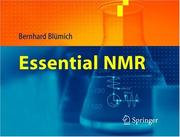
ISBN: 9783540236054 9783540271932 3540236058 Year: 2005 Publisher: Berlin, Heidelberg Springer-Verlag Berlin Heidelberg
Abstract | Keywords | Export | Availability | Bookmark
 Loading...
Loading...Choose an application
- Reference Manager
- EndNote
- RefWorks (Direct export to RefWorks)
ESSENTIAL NMR is a set of lecture notes for scientists and engineers who want to brush up on their knowledge of NMR. This book is also a compendium for graduate and postgraduate students of physics and chemistry as well as for their teachers, covering all fields of NMR, i.e. NMR methodology and hardware, chemical analysis, 2D-spectroscopy, NMR imaging, flow NMR, and quality control NMR. The material, selected and organized for a one-semester course, is presented with pairs of pages addressing particular topics. One page of each pair provides a text containing the key information, the other page shows a color illustration. This is the most comprehensive textbook on NMR to date. The book is intended for beginning graduate students and doctoral students of Physics, Chemistry, Chemical Engineering, and Material Science.
Book
Year: 1965 Publisher: New York (N.Y.): Academic press,
Abstract | Keywords | Export | Availability | Bookmark
 Loading...
Loading...Choose an application
- Reference Manager
- EndNote
- RefWorks (Direct export to RefWorks)

ISBN: 9781560816645 1560816643 Year: 1994 Publisher: New York: VCH,
Abstract | Keywords | Export | Availability | Bookmark
 Loading...
Loading...Choose an application
- Reference Manager
- EndNote
- RefWorks (Direct export to RefWorks)
Book
ISBN: 3540104593 9780387104591 0387104593 9783540104599 Year: 1981 Publisher: Berlin: Springer,
Abstract | Keywords | Export | Availability | Bookmark
 Loading...
Loading...Choose an application
- Reference Manager
- EndNote
- RefWorks (Direct export to RefWorks)
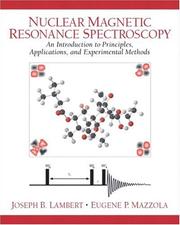
ISBN: 0130890669 9780130890665 Year: 2004 Publisher: Upper Saddle River: Pearson,
Abstract | Keywords | Export | Availability | Bookmark
 Loading...
Loading...Choose an application
- Reference Manager
- EndNote
- RefWorks (Direct export to RefWorks)
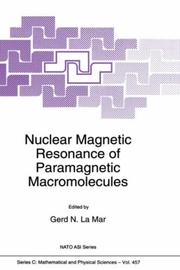
ISBN: 0792333489 9048145228 9401585733 9780792333487 Year: 1995 Volume: 457
Abstract | Keywords | Export | Availability | Bookmark
 Loading...
Loading...Choose an application
- Reference Manager
- EndNote
- RefWorks (Direct export to RefWorks)
Book
ISBN: 9783137017011 3137017017 Year: 1987 Publisher: Stuttgart: Thieme,
Abstract | Keywords | Export | Availability | Bookmark
 Loading...
Loading...Choose an application
- Reference Manager
- EndNote
- RefWorks (Direct export to RefWorks)
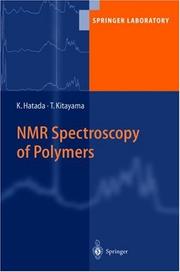
ISBN: 3540402209 9783540402206 Year: 2004 Publisher: Berlin: Springer,
Abstract | Keywords | Export | Availability | Bookmark
 Loading...
Loading...Choose an application
- Reference Manager
- EndNote
- RefWorks (Direct export to RefWorks)
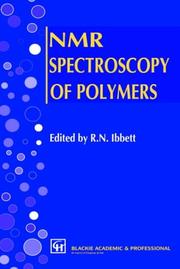
ISBN: 075140005X 9780751400052 Year: 1993 Publisher: London: Blackie,
Abstract | Keywords | Export | Availability | Bookmark
 Loading...
Loading...Choose an application
- Reference Manager
- EndNote
- RefWorks (Direct export to RefWorks)
Book
Year: 2016 Publisher: Bruxelles: UCL. Faculté de médecine et de médecine dentaire,
Abstract | Keywords | Export | Availability | Bookmark
 Loading...
Loading...Choose an application
- Reference Manager
- EndNote
- RefWorks (Direct export to RefWorks)
L'IRM cardiaque en séquence SSFP GE est devenue au cours des dernières dizaines d'années la technique de référence pour l'évaluation de la fonction cardiaque. L'excellente résolution temporelle, le contraste sang-myocarde spontané ainsi que le caractère non-invasif et non irradiant de la technique ne sont que quelques arguments en faveur de la technique. De plus, l'évaluation de la fonction cardiaque fait de plus en plus partie intégrante de l'examen cardiovasculaire de routine en clinique. Seulement quelques études se sont consacrées à la détermination des valeurs de volumes, de masses et fonctionnelles ventriculaire chez les enfants, le plus souvent à partir de petites cohortes, et utilisant différentes techniques d'acquisition. Ce manque de valeurs de référence représente une limitation à l'utilisation de l'IRM en cardiologie pédiatrique. Le but de notre étude est de déterminer des valeurs normatives de volume, de masse et de fonction bi-ventriculaire en IRM cardiaque SSFP à partir d'une cohorte d'enfants entre 0 et 18 ans. Matériel et méthodes : Nous avons étudié de manière rétrospective les examens en IRM cardiaque court-axe (en IRM SSFP 1.5T) de 158 enfants âgés de 18 jours à 18 ans et 215 jours. Une échocardiographie normale et l'absence d'antécédents cardiovasculaires faisaient partie des critères d'inclusion à notre cohorte. Nous avons déterminé les volumes télé systoliques et télé diastoliques et la masse ventriculaire gauche et droite pour chaque enfant, à partir d'une technique utilisée fréquemment en clinique et validée par la littérature. Pour chaque paramètre, nous avons déterminé les valeurs moyennes, selon le sexe et par groupe d'âge (0-6, 7-12, 13-18 ans).Résultats: Nous avons déterminé les valeurs moyennes pour le volume en télésystole, en télédiastole, la fraction d'éjection et la mise pour les garçons et les filles et pour chaque groupe d'âge, ainsi que les valeurs indexées sur la surface corporelle (BSA), la taille et le poids. Nous avons trouvé une augmentation avec l'âge pour les volumes bi-ventriculaires indexés sur le BSA et la taille, ainsi qu'une augmentation de la masse bi-ventriculaire indexée sur le BSA et sur le poids. La fraction d'éjection biventriculaire est stable dans les différents groupes d'âge. La fraction d'éjection n'est pas différente entre le groupe des garçons et le groupe des filles. La masse ventriculaire gauche est plus; élevée de manière significative dans notre groupe de garçons. Les volumes indexés sur le BSA et sur le poids sont également plus élevés chez les garçons.Conclusion : Nous avons déterminé des valeurs fonctionnelles, volumiques et de masse bi-ventriculaires dans une population pédiatrique en bonne santé entre 0 et 18 ans, incluant des très petits bébés, à IRM 1.5T SSFP. Nos valeurs sont comparables avec celles déterminées dans les précédentes études, plus particulièrement pour le ventricule gauche. Nous données pourront être utilisées à l'avenir pour réaliser des courbes de percentile pour les valeurs indexées. SSFP GE sequence in cardiac magnetic resonance imaging has emerged in the past decades as the gold standard technique to evaluate cardiac function. The excellent temporal resolution, along with a very good blood-myocardiaum contrast, as well as the non-invasive character of the technique is only some of the numerous advantages offered by MRI. ln addition, the assessment of cardiac function is becoming an integrant part of the routine cardiac clinical examination. Only a few studies did measure the ventricular function, volumes and mass in small groups of healthy children population, and using different acquisition techniques. This lack of normative data is a limiting factor in the optimal use of pediatric cardiac MRI. The aim of our study is to establish normative data for biventricular volumes, mass and function in SSFP MRI from a healthy pediatric population between 0 and 18 years.Material and methods : We retrospectively studied short axis cardiac MRI (performed on 1.ST SSFP MRI system) of 158 children aged 18 days to 18 years and 215 days, all of them having a normal echocardiography and no cardiovascular history. We calculated end-systolic and end diastolic volumes and mass for the right and left ventricle for each child, according to a method frequently used in clinical practice. For each parameter, we determined the mean value, according to the child sex and for each age group (0-6, 7-12 and 13-18 years old).Results : We did determine mean values for biventricular end-systolic, end-diastolic volumes, ejection fraction and mass for the boys and the girls and each age group, as well as the indexed values for body surface area (BSA), size and weight. We did find an increase with age for both BSA and size indexed left and right volumes, and BSA and weight indexed biventricular mass. Biventricular ejection fraction is stable throughout the ages groups. Biventricular ejection fraction is not different in the boys and girls groups. Left ventricular mass is significantly higher in the boys group. BSA and weight indexed biventricular volumes are higher in our boys population as well. Conclusion: We did determine normative biventricular volumic, functional and mass values for a healthy pediatric population, including very young babies in 1.5 T SSFP MRI. Our values were comparable with the ones determined in former studies, especially for left ventricle. Our data could be used in the future to determine percentile curves for indexed values.
| Listing 1 - 10 of 130 | << page >> |
Sort by
|

 Search
Search Feedback
Feedback About UniCat
About UniCat  Help
Help News
News